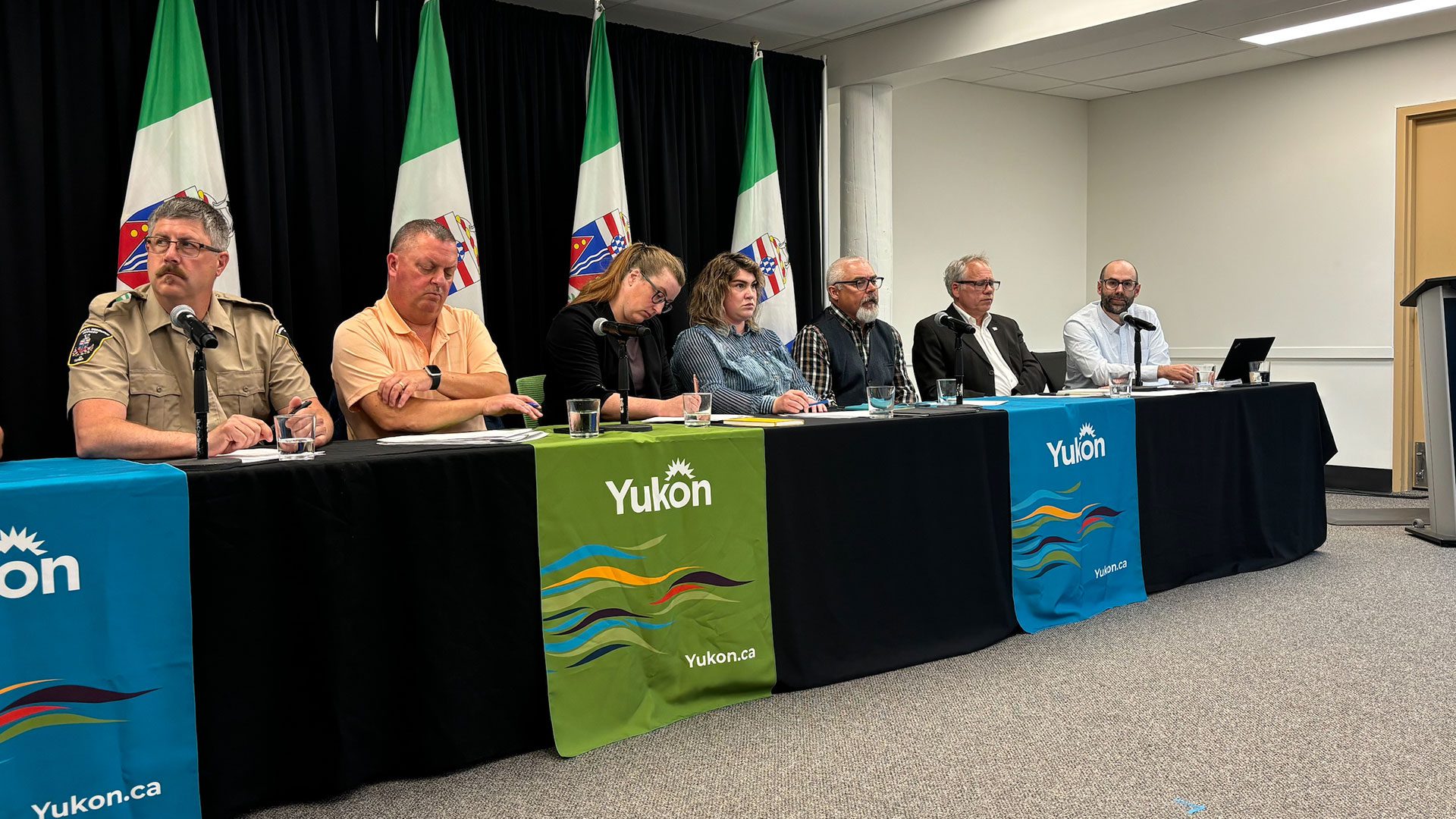A Yukon environmental organization and a salmon conservation committee say the confirmation of the cyanide spill at the Eagle Gold Mine in north-central Yukon is “distressing.”
“It broke my heart to listen to the technical briefing yesterday. It was physically painful,” said Randi Newton, conservation manager for the Canadian Parks and Wilderness Society’s Yukon branch (CPAWS).
The technical briefing Newton is referring to was held on July 4 by the Yukon government. Officials provided the latest efforts to assess the damage caused by the landslide.
On June 24, the mine experienced a heap leach failure which caused a stockpile of ore to landslide. Heap leaching is where chemicals are sprayed on ore that contains cold. The mixture, including cyanide, washes into a basin where it’s collected.
The slide, which was about 1.5 kilometers in length, caused ore to spill over an embankment at the facility’s base. The mine’s owners, Victoria Gold Corp., estimate the slide forced two million tonnes of material to leave the containment area.
On July 4, Energy, Yukon’s Mines and Resources Minister John Streicker announced sampling results showed 8.58 milligrams per litre of cyanide had been found at the bottom of the slide.
Sampling also showed 0.04 milligrams per litre of cyanide was found in Haggart Creek, about 3.5 kilometers south of the mine.
Stricker said the level of cyanide found in the creek could potentially affect fish depending on other chemicals in the water. The government is conducting various testing, including fish toxicity testing, to better understand the contamination.
Newton said studies by the Yukon Environmental and Socio-economic Assessment Board (YESAB) in its review of the mine found cyanide levels of 0.02 milligrams per litre can be toxic to fish in some cases.
“It makes a lot of sense if they brought in a fish toxicologist because this could be quite bad,” she said.

Newton said there are still many unanswered questions about the incident, such as a July 4 statement by Victoria Gold that no cyanide had been detected. Newton also has concerns about the slide itself.
“We don’t have a full picture of how contained this spill is. They’ve said that half of the landslide is contained. Do we know actually that the liner is not ripped below that supposedly contained ore?” she said.
“We just don’t know.”

Dennis Zimmerman, chair of the Yukon Salmon sub-committee, said he’s concerned with the path the cyanide might take.
Zimmerman said Haggart Creek drains into the McQuesten River, which is part of the Stewart River watershed.
“We’re quite concerned, just you know, physiologically, where we don’t want to lose any fish,” he said.
He said the creek is a significant chinook salmon-bearing area, acting as a nursery for young fry and a spawning ground for adult fish.
Zimmerman said chinook, which have been in decline for a number of years, need a pristine environment so numbers can rebound.
“This is one of those places where they should have refuge or they should have rest in order to spawn, and that’s not happening. Now they have this additional stress,” he said.
He said the incident is proof it’s time the territory needs a major overhaul of its mining legislation.
“We want to ensure that we have a diverse economy with lots going on, but the salmon need a voice, and you know, that voice isn’t being heard right now,” he said.

Marcello M. Veiga, a retired UBC mining engineering professor, said cyanide levels above 0.05 can affect fish’s ability to swim. He said elevated levels of cyanide in the creek could impact fish. However, he’s doubtful the levels found are high enough to cause fish to die.
He noted cyanide tends to dissolve quickly in water and that it can be destroyed naturally on dry ground by the sun’s UV rays, as well as through oxidation.
Veiga said only long-term testing can confirm the level of toxicity in the creek.
The government said it will collect surface water samples every second day in Haggart Creek and two to three times a week from other locations.
“To see the effect of fish in the long term…you need about 30 days of samples. The legislation in BC, you have to analyze in 30 days, five times, at least,” he said.
“It’s not easy to say (until you test).”
The First Nation of Na-Cho Nyak Dun, which is located in the community of Mayo, 85 kilometers from the mine site, said it was pausing interviews for the time being.
A spokesperson said it plans to speak with the media again soon.









